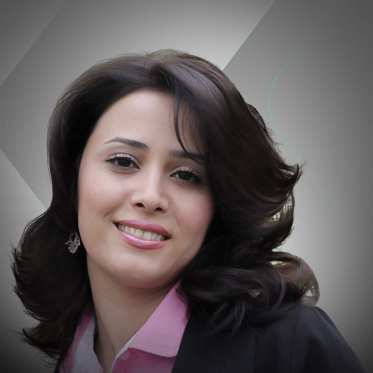In Iran, feminism is overthrowing the government

LOS ANGELES, United States (Kurdistan24) – Amnesty International reported Wednesday that since the beginning of this year, more than a dozen women’s rights activists in Tehran had been interrogated by the Revolutionary Guards.
FEMINISM A THREAT TO NATIONAL SECURITY
The religious dictatorship in Iran relies heavily on patriarchy to survive. When Men are watchdogs for women, the government needs to control only half of the society and the other half is an (unwitting) agent reproducing suppression. Afterall, empowered women are not easily silenced.
Women's activists are treated as "enemies of the state" and threatened with imprisonment on national security-related charges, AI reported. The government is specifically sensitive about the two following initiatives:
The first was a campaign launched in October 2015 to advocate for more female involvement in Iran’s February 2016 parliamentary election. It was called the Campaign to Change the Masculine Face of Parliament.
Second, a website called “Feminist School” began educating people about feminism in theory and practice by posting reports and articles on women issues in Iran and around the world.
Iranian-Canadian academic Homa Hoodfar was recently arrested upon visiting Iran and has been for the most part incommunicado since.
An article published in the Revolutionary Guards-affiliated press stated that Hoodfar’s work with Women Living Under Muslim Laws (WLUM) to promote feminism and women’s equality in Muslim countries and enhance women’s bodily autonomy was aimed at “disrupting public order” and “prompting social-cultural changes that can ultimately pave the ground…for a soft overthrow.”
Indeed, if Iranian women of diverse backgrounds were to unite and speak in solidarity, they could overthrow the regime.
BACKGROUND OF WOMEN MOVEMENT IN IRAN
Since the 1910-era Constitutional Revolution, women in Iran have struggled to achieve gender equality, only to no avail.
In the 1930s, women had 14 magazines discussing their rights, and by the 1970s had gained some freedom of education and occupation.
But these achievements were taken away when Ruhollah Khomeini usurped power in Iran in 1979.
Throughout history, Iranian rulers have established power over the country by subjugating the female body. Reza Shah, the Pahlevi Dynasty’s first Shah, ruled Iran from 1925 to 1941. He forcibly removed the hijab from women in an attempt to westernize the country.
Since 1979, the Islamic Republic has forced the hijab back onto women to Islamize the country.
After a century-old movement, women are still officially considered subhuman in the eyes of the state.
Women suffer gross injustice in areas related to marriage, divorce, and child custody. They are legally unable to work or leave the country without their husband’s permission. A woman cannot marry without her father or a male guardian’s authorization.
There is little to no protection for women and girls against sexual harassments, and domestic and external violence.
Additionally, early and forced marriage, as well as marital rape, is still common in the country.
Women’s rights groups were hopeful that gender-based discrimination would ease under President Hassan Rouhani, but they have seen few improvements.
According to the Global Gender Gap Report by the World Economic Forum, Iran ranked 130 out of 136 countries in 2013.
Just three percent of Iran’s parliamentarians are women. Even influential ministers such as Maryam Mojtahidzadeh, head of the women's ministry, talk about ‘complementary’ roles for women—not equality.
A DIVIDED MOVEMENT
Feminism under a theocratic government that severely suppresses any challenge to its “divine” rules is an endless struggle. Any activity must be undertaken with extreme caution and has severe repercussions.
But the Iranian women movement is divided and is facing many challenges.
The contradictory perspectives of secular women activists versus religious ones is one of the main obstacles.
While one group believes “genuine” Islam can be emancipating for women, the other considers secularism as the first step out of male domination.
Urban and rural women are also divided. Middle and upper-middle class women seek occupational and educational rights, while for poorer women, health issues and welfare are primary needs.
Kurdish women's activist Geziza Bapiri believes feminism does not receive the social support it needs.
"Iranians have not been educated about the value of feminism. That kind of awareness frightens the regime," Bapiri said.
"Also, the movement is a protest. Iran does not tolerate any sort of criticism because it might surface the dissatisfaction among the citizen or inspire other movements. That terrifies the government too," Bapiri added.
But an important, yet unacknowledged, source of division among feminists in Iran is the ethnocentrism of the dominant group.
Women of Kurdish, Baluch, Arab or Turkmen origins in Iran suffer ethnic as well as gender oppression. However, the first level of subjugation is not admitted by the feminists of the dominant group.
The plight of ostracized women is marginalized not only by the patriarchy in their culture and the national chauvinism of the ruling state but also by the negligence of mainstream feminists.
Last week Kurdish women began a campaign to support female cyclists who were harassed and threatened by officials. The women were biking as part of an environmentalist movement, namely "Green Tuesdays."
Despite the momentum it gained in the Kurdish region, the initiation was largely overlooked by prominent Iranian feminists.
Editing by Karzan Sulaivany
